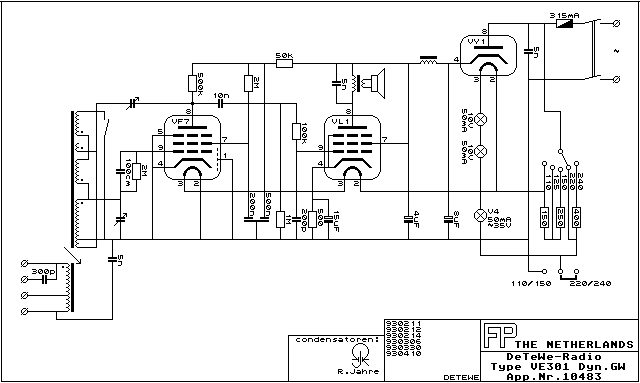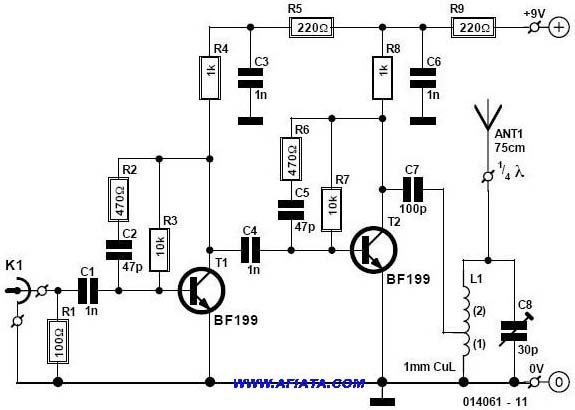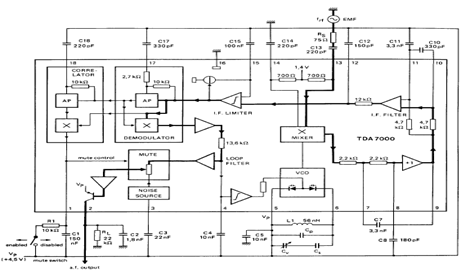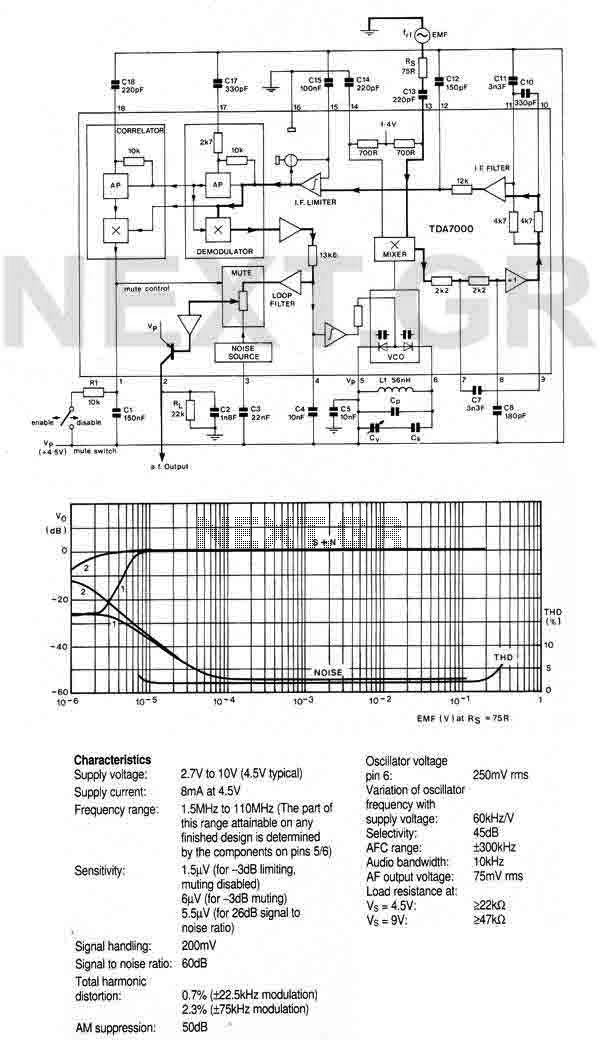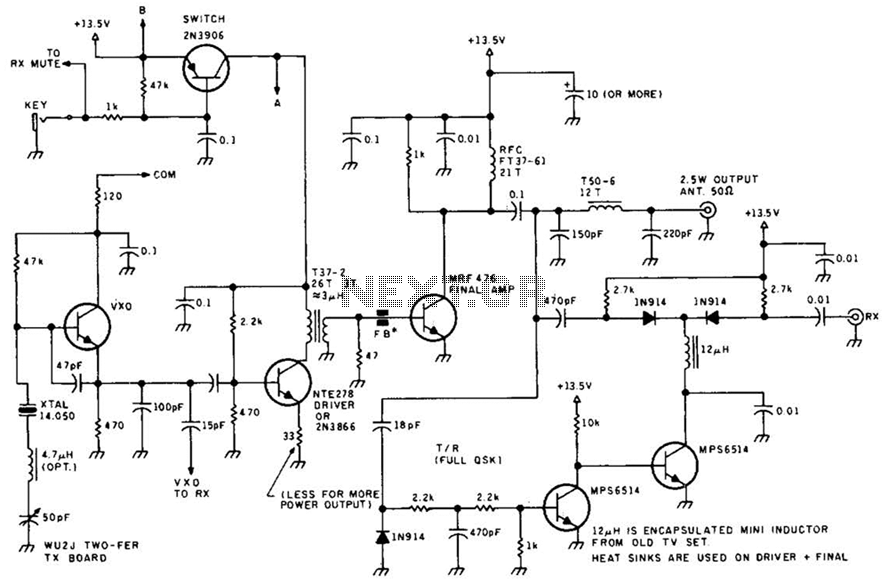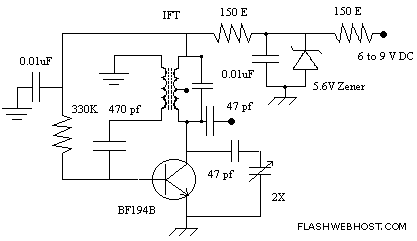
Complete Radio Set with MK484 and Loudspeaker
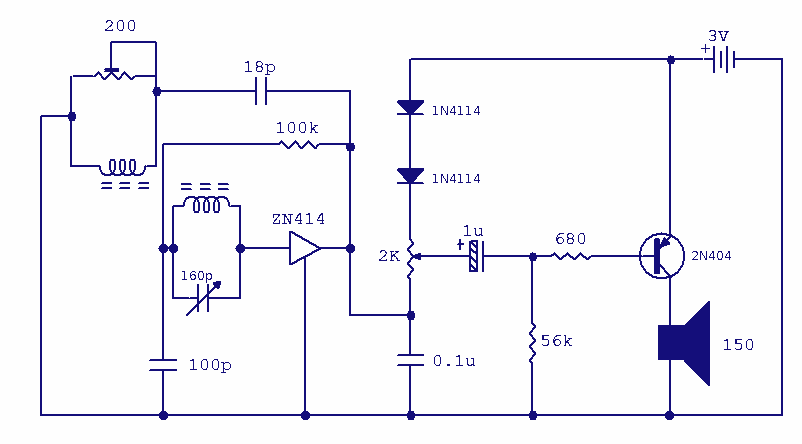
A complete AM radio set based on the MK484 IC (formerly ZN414). It uses a PNP transistor and can drive a 150R loudspeaker. Chad has built a complete radio receiver using 1 IC and a single transistor. The IC requires around 1.2 to 1.6V and this is supplied via the 3V battery in series with 2 diodes 1N4114 diodes, (1N4004 can be substituted) and the 2k volume control.
The AM radio set utilizes the MK484 integrated circuit, which is specifically designed for AM radio reception. The circuit configuration includes a PNP transistor that amplifies the audio signal sufficient to drive a 150-ohm loudspeaker, making it suitable for personal listening applications. The MK484 operates within a voltage range of approximately 1.2 to 1.6 volts, which is achieved through a power supply configuration involving a 3V battery in series with two 1N4114 diodes. This arrangement helps to regulate the voltage supplied to the IC, ensuring stable operation.
The use of 1N4004 diodes as a substitute for the 1N4114 diodes provides flexibility in component selection while maintaining the necessary forward voltage drop to achieve the desired operating voltage for the MK484. The circuit also incorporates a 2k ohm volume control, allowing the user to adjust the audio output level to their preference.
The overall design is compact and efficient, leveraging minimal components to achieve a functional AM radio receiver. The simplicity of the circuit makes it an excellent choice for hobbyists and educational projects, illustrating fundamental principles of radio frequency reception and audio amplification. This AM radio set is a practical demonstration of integrating low-voltage components to create a working audio device.A complete AM radio set based on the MK484 IC (formerly ZN414). It uses a PNP transistor and can drive a 150R loudspeaker. Chad has built a complete radio receiver using 1 IC and a single transistor. The IC requires around 1.2 to 1.6V and this is supplied via the 3V battery in series with 2 diodes 1N4114 diodes, (1N4004 can be substituted) and the 2k volume control. 🔗 External reference
The AM radio set utilizes the MK484 integrated circuit, which is specifically designed for AM radio reception. The circuit configuration includes a PNP transistor that amplifies the audio signal sufficient to drive a 150-ohm loudspeaker, making it suitable for personal listening applications. The MK484 operates within a voltage range of approximately 1.2 to 1.6 volts, which is achieved through a power supply configuration involving a 3V battery in series with two 1N4114 diodes. This arrangement helps to regulate the voltage supplied to the IC, ensuring stable operation.
The use of 1N4004 diodes as a substitute for the 1N4114 diodes provides flexibility in component selection while maintaining the necessary forward voltage drop to achieve the desired operating voltage for the MK484. The circuit also incorporates a 2k ohm volume control, allowing the user to adjust the audio output level to their preference.
The overall design is compact and efficient, leveraging minimal components to achieve a functional AM radio receiver. The simplicity of the circuit makes it an excellent choice for hobbyists and educational projects, illustrating fundamental principles of radio frequency reception and audio amplification. This AM radio set is a practical demonstration of integrating low-voltage components to create a working audio device.A complete AM radio set based on the MK484 IC (formerly ZN414). It uses a PNP transistor and can drive a 150R loudspeaker. Chad has built a complete radio receiver using 1 IC and a single transistor. The IC requires around 1.2 to 1.6V and this is supplied via the 3V battery in series with 2 diodes 1N4114 diodes, (1N4004 can be substituted) and the 2k volume control. 🔗 External reference
